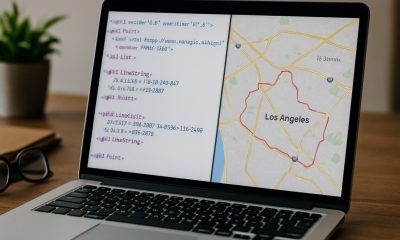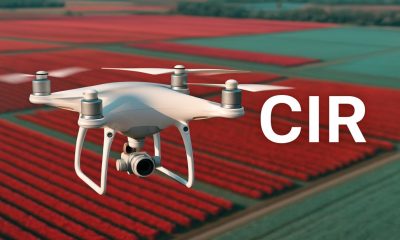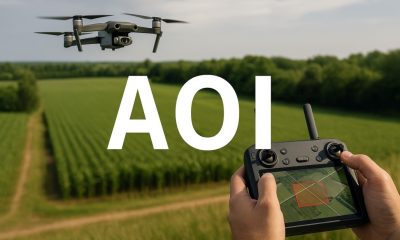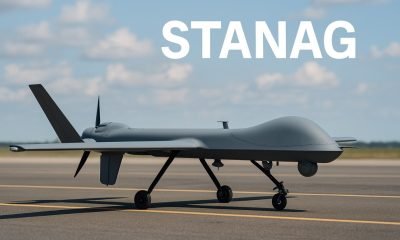- Acronym Guide
- AAM
- ABS
- AC
- ACAS
- ADS-B
- AFAC
- AGL
- AI
- AIM
- ALS
- AM
- AMA
- ANSP
- AOI
- APPI
- AUV
- AUVSI
- ARPAS-UK
- ASTM
- ATC
- BVLOS
- CAA
- CAAC
- CAB
- CASA
- CATT
- CBO
- CBR
- CBRN
- CDMA
- CDR
- CFR
- CIR
- COA
- COMINT
- CORS
- COTP
- COTR
- CPTED
- CV
- C2
- DAA
- DEM
- DFI
- DFS
- DGCA
- DHS
- DOD
- DPA
- DPEs
- DRG
- DRO
- DSM
- DSMX
- DSP
- DSSS
- DTM
- EASA
- EFT
- EO
- EOD
- EO/IR
- ELINT
- EMI
- ESC
- EVLOS
- eVTOLs
- FAA
- FCC
- FCS
- FHSS
- FICCI
- FLIR
- FOB
- FOV
- FPS
- FPV
- GBDAA
- GCP
- GCS
- GDPR
- GML
- GNSS
- GPS
- GSD
- GVC
- HDR
- HOGE
- IACRA
- ICAO
- ICS
- IMU
- INS
- IR
- ISA
- ISR
- ITU
- JARUS
- LAAMS
- LAANC
- LAATM
- LAI
- LBA
- LIDAR
- LOS
- LSALT
- MAC
- MAVLink
- MLIT
- MMS
- MSL
- MTOM
- NDAA
- NCSL
- NFZ
- NIST
- NMEA
- NOTAM
- NPA
- NPRM
- NTIA
- OBIA
- OEM
- OFDM
- OOP
- PASM
- PAV
- PCV
- PdM
- PEC
- PIC
- PID
- PIPL
- PLD
- PM
- PN
- PPK
- PPS
- PSM
- PWM
- UAM
- UAOP
- UAS
- UASTM
- UAV
- UCAVs
- UHD
- UHF
- USV
- UTM
- RAIM
- RCC
- RCS
- RFI
- ReOC
- RePL
- RMS
- ROI
- RPAS
- RPC
- RTH
- RTK
- SaR
- SAR
- SARP
- SBAS
- S.Bus
- SBIR
- SEDENA
- SfM
- SFOC
- SIGINT
- SLAM
- SMS
- SORA
- STANAG
- STTR
- sUAS
- TCAS
- TCCA
- TFR
- TIN
- TOF
- TP
- TPS
- TSA
- VHF
- VLOS
- VTOL
Drone Acronyms
What is COTR (Contracting Officer’s Technical Representative)?
By
Jacob StonerTable Of Contents

Definition
A COTR, or Contracting Officer’s Technical Representative, is a designated individual who oversees the technical execution of a government contract—especially those involving UAV procurement, testing, or operations. While the Contracting Officer’s Technical Representative does not have the authority to modify a contract, they serve as a key liaison between the contractor and the Contracting Officer. Their job is to ensure performance, timing, and technical quality align with contractual requirements.
Usage
In drone programs, a Contracting Officer’s Technical Representative manages technical communications between the government and contractors. This role involves monitoring deliverables, verifying UAV performance, and addressing questions related to system integration or test results. As a result, the COTR plays a direct role in keeping the project on track.
Relevance to the Industry
As drone adoption expands in defense, public safety, and infrastructure sectors, government contracts have become more common. Consequently, the Contracting Officer’s Technical Representative has become a crucial figure in ensuring these contracts meet performance and safety standards. Their oversight reduces risks, ensures regulatory alignment, and confirms that public funds support reliable drone technology.
How Does COTR (Contracting Officer’s Technical Representative) Work?
The Contracting Officer’s Technical Representative ensures that all technical work under a UAV contract is performed according to plan. Although they can’t change contract terms, they act as the technical lead and primary point of contact for the contractor. Here’s how the role typically functions:
Appointment and Delegation
The Contracting Officer appoints the COTR in writing. This delegation outlines their duties, reporting procedures, and limitations. Before starting, the COTR must complete acquisition and oversight training—especially for complex or high-risk drone projects.
Support Before the Contract Starts
Sometimes, the COTR helps draft technical requirements or evaluate vendor proposals. Once the contract is awarded, they shift to overseeing technical performance.
Ongoing Oversight and Communication
The COTR tracks progress and checks that deliverables match specifications. They may:
Monitor milestones
Review UAV performance data and software updates
Confirm that components meet requirements
Clarify technical details for both parties
Additionally, they often attend field tests, deployments, or design reviews to ensure situational awareness.
Documenting and Reporting Issues
Throughout the project, the COTR documents technical evaluations. If delays or safety concerns arise, they escalate these to the Contracting Officer. While they don’t have authority to resolve disputes, their input heavily influences decision-making.
Maintaining Compliance
The COTR verifies that the contractor:
Meets quality standards like MIL-SPEC or NDAA compliance
Provides safe and functional UAV systems
Submits accurate reports and documentation
Stays within the project timeline and scope
Final Review and Project Closeout
At the end of the contract, the COTR assesses all final deliverables. Their evaluation helps determine if the contractor met the agreement’s terms, which supports the Contracting Officer’s final payment and closeout decisions.
By combining technical expertise with oversight, the COTR ensures that drone contracts stay aligned with government expectations and safety standards.
Example in Use
“During the federal drone deployment program, the Contracting Officer’s Technical Representative (COTR) conducted site visits and reviewed test results to confirm the UAVs met all operational criteria.”
Frequently Asked Questions about COTR (Contracting Officer’s Technical Representative)
What is the difference between a COTR and a Contracting Officer?
A Contracting Officer (CO) can legally award, modify, or terminate contracts. In contrast, the COTR ensures technical compliance but cannot change cost, scope, or terms.
What are typical responsibilities of a COTR in UAV contracts?
Track contractor performance
Review technical deliverables
Provide guidance within contract limits
Verify safety and quality standards
Report problems to the Contracting Officer
Who appoints the COTR, and how are they qualified?
The Contracting Officer appoints the COTR, typically from the agency managing the contract. COTRs complete formal training in acquisition, oversight, and often have a strong background in engineering or UAV operations.
For examples of these acronyms visit our Industries page.
As the CEO of Flyeye.io, Jacob Stoner spearheads the company's operations with his extensive expertise in the drone industry. He is a licensed commercial drone operator in Canada, where he frequently conducts drone inspections. Jacob is a highly respected figure within his local drone community, where he indulges his passion for videography during his leisure time. Above all, Jacob's keen interest lies in the potential societal impact of drone technology advancements.











